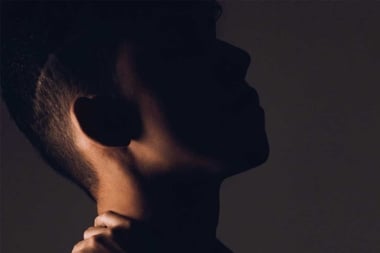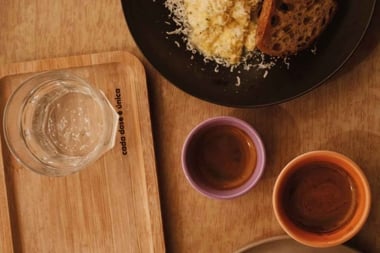
Like aging, gray hair is inevitable. And whether we’re genetically gifted with grays or choose to switch things up with a little color, many of us head to the salon or local drug store aisles for some well-deserved TLC. But during the pandemic, what was once the job of salon professionals fell to us to figure out! With hair care in our own hands, we became distinctly aware of the ingredients that go into hair dyes, leading us to ask: Isn’t there a better way?
The traditional route
Ingredients in synthetic hair dye typically include a combination of peroxide and ammonia, which are known to damage hair and trigger allergic reactions. These ingredients may also increase the user’s risk of breast cancer, urinary bladder cancer, and non-Hodgkin’s lymphoma.
The natural world of hair care
Sarah Griffiths, owner of Treo Organic Salon, hadn’t planned on going natural. Roughly 15 years ago, while working in a poorly ventilated salon, she started responding to the toxicity, experiencing dizzy spells, headaches, nausea, and eczema. “It was really scary,” says Griffiths. “I didn’t know what was happening.” Discovering organic hair color allowed her to get back to work and inspired her to open her own salon.
Beata Caltagirone, owner at BeataTe Hair Salon, also found natural was best through experience. She saw the toll conventional hair products took on her as a stylist and went natural to improve the overall health of herself and her customers.
Caltagirone and Griffiths agree that natural colors are less irritating, more nourishing, and more nurturing, and as a result, produce healthier looking hair than traditional dyes. Natural stylists can reproduce the entire spectrum of colors you’ve become accustomed to through the traditional dying process: Bleach blonde, funky colors, and darker tones are all possible, expresses Griffiths. Natural hair dye also offers 100 percent gray coverage and boasts the same longevity as synthetic dyes, adds Caltagirone.
Griffiths’s schedule is packed, with many driving one or two hours to see her. She encourages readers to request natural alternatives from their current stylists.
Going natural on your own
Henna has been used as temporary body art for women during marriage or other social celebrations since the Bronze Age. It’s also a popular red hair dye whose properties help prevent premature hair loss and graying hair. It is often used on gray hair in combination with other ingredients to create brown colors.
Other DIY ingredients include jatamansi, coffee, walnuts, tea, lily stamens, beet juice, and turmeric. Natural boxed dyes can be purchased at your local health food store, and some natural salons offer colors for curbside pick up.
Healthy hair from the inside out
The human scalp has approximately 100,000 hair follicles, 90 percent of which are in the anagen phase. At this stage, essential elements such as proteins, vitamins, and minerals are crucial to effectively producing healthy hair. You may choose to supplement, but the necessary micronutrients for healthy hair can also be found in a healthy diet.
For instance, the combination of essential omega-3 fatty acids, protein, vitamin B12, and iron in fish prevents scalp dryness and dull hair. Dark green veggies include high levels of vitamins A and C, acting as a natural conditioner. Shellfish, spinach, and red meats are rich in iron, which can help you bypass premature graying.
Keeping it natural—on the daily
Many everyday ingredients that may already be in your cupboard can be used to hydrate, strengthen, style, and care for your hair:
- Coconut oil strengthens hair, prevents dryness, and promotes hair growth.
- Jojoba helps moisturize hair, maintain pH, and reduce hair loss.
- Aloe vera can be used to treat hair loss and encourage hair growth.
- Olive oil softens and moisturizes hair.
- Hibiscus contains calcium, phosphorus, iron, vitamin B1, vitamin C, riboflavin, and niacin, which trigger thicker hair growth and combat premature graying.
- Fenugreek conditions hair and has a high protein content, which may encourage hair growth.
- Honey has moisturizing properties.
- Whether you’re looking for a dramatic change, or to add a little more natural to your hair care routine, natural hair care is within your grasp.
Ingredient no-no’s
- P-phenylenediamine is a type of coal tar dye and common ingredient in many hair dyes. Darker dyes generally contain more of the substance than lighter colors. Coal tar is a recognized human carcinogen.
- Sulfates have been linked to skin and eye irritation and reduced body weight.
- Parabens and phthalates are endocrine disrupting chemicals that interrupt natural hormone production.
- Fragrance/parfum exposure has been linked to symptoms including migraines, contact dermatitis, asthma attacks, and respiratory difficulties.
Supplements for strong, healthy hair
- A multivitamin provides trace minerals like iron, magnesium, zinc, and biotin that impact your hair.
- Biotin (vitamin B7) has been proven to improve hair health, including shine, volume, and scalp coverage, in women who experience thinning hair.
- Collagen has shown to decrease hair shedding and promote hair growth.
- Supplementing with iron, vitamin D, folate, vitamin B12, and selenium may lessen premature graying.
- Since the hair shaft is made almost exclusively of protein, protein intake is integral for healthy hair.
- One recent study found those with female pattern hair loss given an omega-3 and omega-6 supplement saw an increase in hair diameter and hair density and reduction in hair loss compared to those in the control group.
Ancient origins
The first time in known history natural hair dye was used was by the ancient Egyptians. They used henna plant pigments for hair darkening and color reinforcement.





